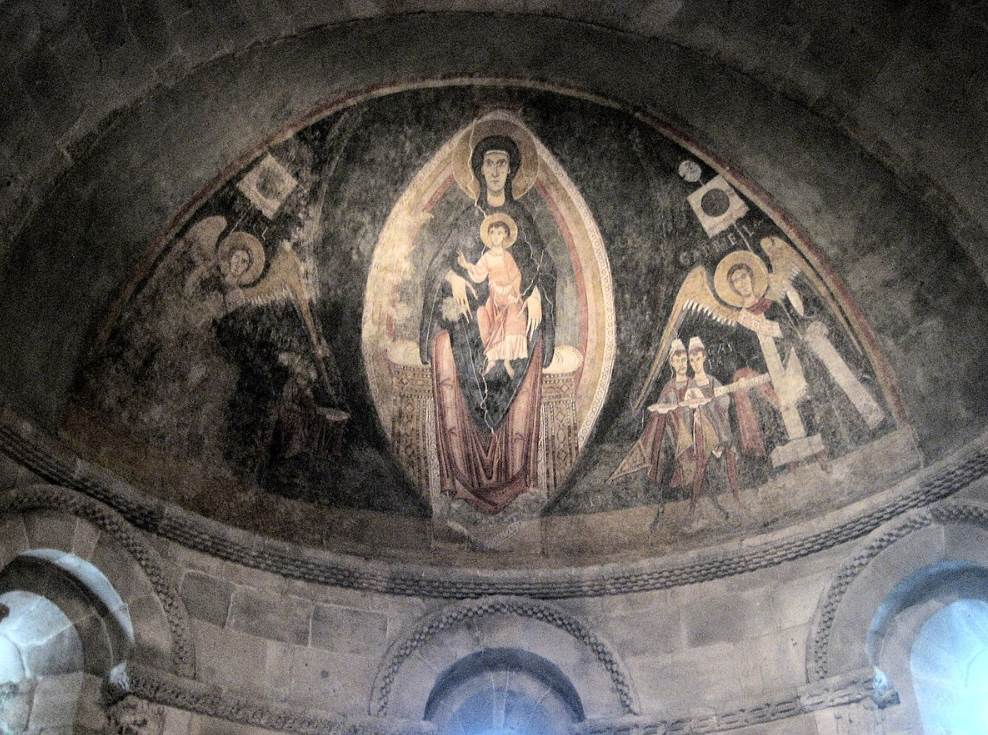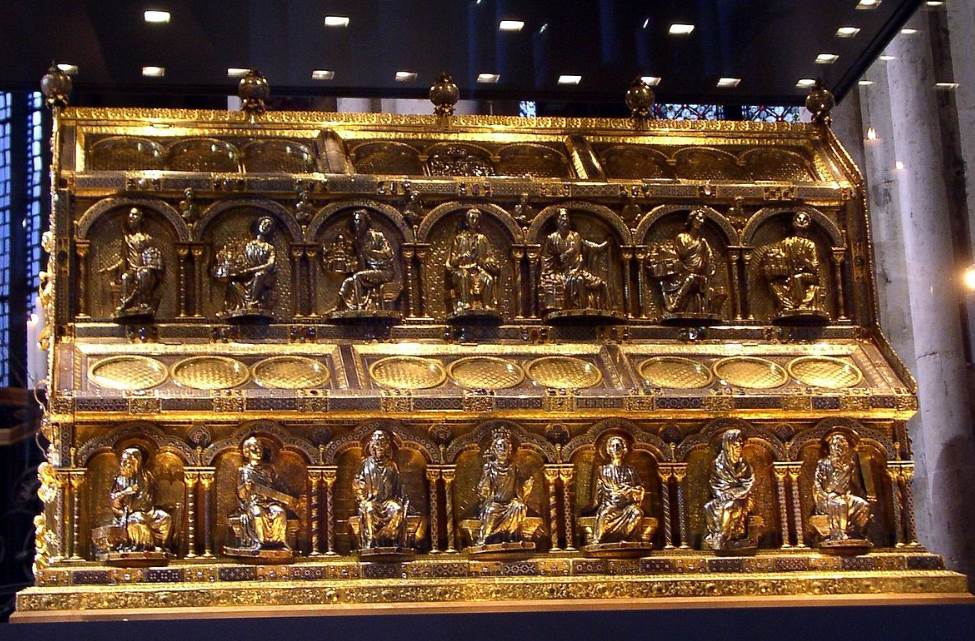The Fall of the Western Roman Empire in 476 A.D. was a devastating event in Europe. Regardless, the cultural influence of the once mighty empire remained for centuries.
This is emphasized by the fact that Roman and Byzantine art heavily influenced the first notable art movement that emerged in Western Europe.
History of Romanesque art
Although many regions in Western Europe plunged into the Dark Ages, a term used to describe the low frequency of cultural advancements, the influence of classical antiquity never ceased.
That’s mainly because the Byzantine Empire still thrived and ruled most parts of the Eastern Mediterranean until its fall in the year 1453.
The prelude to the first major art movement in Europe since antiquity was a period identified as the “Pre-Romanesque” era. Historians have a hard time defining when this started.
Some suggest it started as early as the year 500 with the rise of the Merovingian Kingdom. Others suggest it emerged during the Carolingian Renaissance in the late 8th century.
The Romanesque style of art and architecture was the first style to spread all across Catholic Europe. Romanesque architecture and art were closely tied together as both were heavily influenced by classical antiquity.
The Romanesque artists emerged around the year 1000 and lasted until about 1150. The exact date when it transformed into Gothic art remains up for debate as there is no clear line between the Gothic era and the Romanesque era..

Main Characteristics of Romanesque Art
Most artworks produced during the Romanesque era revolved around church decorations. These were designed to impress and often featured scenes from the life of Jesus Christ.
The use of bright colors dominated artworks and there was a heavy influence from Byzantine art, including gold decorations.
It’s very hard to appreciate the true nature of Romanesque art in modern times because the bright colors of the original paintings and decorations have faded.
The best way to envision how Romanesque murals looked like is from stained glass windows because many windows have retained their original brightness.
The lack of realism is also a dominating factor in Romanesque art. Important figures were painted larger than unimportant ones and background landscapes were nothing more than abstract decorations.
To summarize:
- Focused on religious subjects such as Biblical scenes.
- The use of bright colors was influenced by Byzantine iconography.
- Lack of depth led to a lack of space for the overall composition.
- Important figures are unrealistically large.
- Backgrounds appear as abstract images of unrealistic landscapes.

Types of Romanesque Art
The void created by a lack of originality in combination with unrealistic figures and elements is filled by the fact that many types of art were created during the Romanesque era.
Below is an overview of different types of Romanesque Artworks that were produced during the first century and a half of the second Millennium.
Wall paintings
The robust nature of the Romanesque buildings that were constructed during this period resulted in large interior surfaces. This allowed painters to decorate the walls of churches and abbeys with Biblical scenes. Not many wall paintings from this period remain but several have been restored to their original condition in museums.
Stained glass windows
Arguably the most beautiful artworks produced during the Romanesque era are stained glass windows. The extremely colorful creations of these artworks give us a great insight into what the murals must have looked like. The oldest stained glass window to survive intact is located in Augsburg, Germany, and dates back to the late 11th century.
Sculptures
Just like the murals, sculptures created during the Middle Ages depict Biblical scenes and figures. This includes both the Old and New Testaments. Jesus Christ and scenes from his life and the Passion of Christ were also popular subject matter. Sculptures were intended to decorate churches and were often carved into the building’s masonry.
Metalwork and enamels
Artworks produced from precious metals were the most valuable artworks to be created. They were held in extremely high regard and only the most important people could commission these. The level of detail integrated into fantastic shrines was at a very high level.
Illuminated manuscripts
Illuminated manuscripts are decorations to plain text that included ornamented borders and miniatures. This form of art was first produced in the so-called “Channel School” of England and northern France and was heavily influenced by Anglo-Saxon artworks. This form of art gradually grew in importance and large workshops of scribes emerged all across Europe near the end of the Romanesque era.
Embroideries
Embroideries first emerged during the Romanesque era and consisted of both textiles that could be hung on the wall as a form of decoration or for clothing. The most notable style of embroidery was referred to as “Opus Anglicanum” or “English Work” and consisted of fine needlework that was in very high demand all across Europe.
Notable Romanesque Artworks
If you want to get a clear view of the Romanesque style, then below you can find some of the most notable artworks ever produced during this period:
- Bayeux Tapestry – World-famous tapestry depicting the events that led up to the Norman Conquest of England.
- Apse of Sant Climent de Taüll – An amazing fresco by an unknown artist known as the Master of Taüll that is on display at the Museu Nacional d’Art de Catalunya in Barcelona.
- Pórtico da Gloria – The amazing sculptures that decorate the main entrance of the Santiago de Compostela Cathedral.
- Shrine of the Three Kings – A gilded shrine on display at Cologne Cathedral in Germany that presumably holds the bones of the Three Kings.
- The Last Judgment at Autun Cathedral – An incredible sculptural relief depicting the Last Judgement above the main portal of Autun Cathedral.
Want to learn more? Then check out the most Famous Romanesque Artworks.



